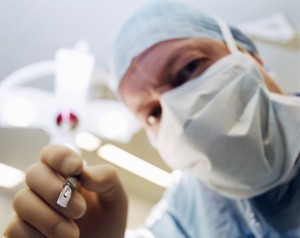Are you awake?

When an individual undergoes general anaesthesia their level of consciousness is estimated from a variety of indirect measures such as heart rate, blood pressure and respiration.
A direct and accurate measure of patient awareness would be highly beneficial in terms of both patient experience and reducing anaesthetic-related morbidity.
Researchers at the University of Oxford have identified a ‘slow-wave saturation’ EEG signature that may be used to develop a platform for pinpointing sufficient loss of awareness and optimal anaesthetic dose.
This personalised biomarker could provide a platform on which to develop a superior and rationale-driven system for monitoring consciousness during surgical and intensive care anesthesia.
A personalised approach to preventing awareness during surgery
When an individual undergoes general anaesthesia their level of consciousness is estimated from a variety of indirect measures such as heart rate, blood pressure and respiration.
While the risk of an anaesthetic overdose is low, and the chance of waking up during surgery lower still, a direct and accurate measure of patient awareness would be highly beneficial in terms of both patient experience and reducing anaesthetic-related morbidity.
A new brain signature for unconsciousness
Using complementary brain imaging methods researchers have identified a ‘slow-wave saturation’ signature that may be used to develop a platform for pinpointing sufficient loss of awareness and optimal anaesthetic dose:
-
EEG slow-waves increase as a patient is anaesthetised and hit a saturation point following a loss of awareness, despite further dosing
-
point of saturation corresponds with fMRI data showing functional isolation of the brain from external stimuli
-
signature is personalised, correlating with an individual’s grey matter volume
-
EEG signature could provide a direct indicator of a patient’s awareness and regulate the anaesthetic dose accordingly
A foundation for superior anaesthetic monitoring
The slow-wave saturation signature identified in this study provides a platform on which to develop a superior and rationale-driven system for monitoring consciousness during surgical and intensive care anaesthesia.
We envisage that this discovery will be of interest to companies wishing to either integrate advanced technology into their existing patient monitoring systems or those looking to capitalise on this research through the development of a stand-alone monitor based on slow-wave neuronal oscillations.
Patent protection
A patent application covering the use of slowwave oscillations to monitor consciousness is currently in PCT phase (PCT/GB2013/051445).
Oxford University Innovation would like to speak to companies interested in developing this method. Request more information if you would like to discuss this further.
about this technology

